By Debbie Page, RN, IBCLC, CEIM, director of TheNewBornBaby.com
 Did you ever think you would be considering nursing two children at the same time? Probably most of us haven’t thought about that, but many women have done it. Known as tandem nursing, it happens all the time with twins and triplets but can be done also be done with children of different ages – for example, nursing your newborn while continuing to nurse your toddler.
Did you ever think you would be considering nursing two children at the same time? Probably most of us haven’t thought about that, but many women have done it. Known as tandem nursing, it happens all the time with twins and triplets but can be done also be done with children of different ages – for example, nursing your newborn while continuing to nurse your toddler.
Depending on where you live, tandem nursing may be looked upon as strange and done only for the mother’s sake: “She is just too attached to her children.”
Here, we go again – everyone wants to tell mothers how to mother. That’s not all bad, typically, but many of the mothering or parenting styles in the last 60 years have been all about detachment – a desire to create a completely independent child from birth: “You don’t want your children to be clingy or immature. You want strong, intelligent, mature adults and that only comes if you start teaching your babies or children to separate from you from birth.” Whoa…wait a minute. According to whom? Isn’t it really the opposite? It is the children that are held, cooed to, whispered to, nurtured, and allowed to breastfeed until they are ready to wean that blossom into these incredible adults with their emotional needs having been met.
Many women become pregnant before their nursing child has weaned. They continue to nurse throughout the pregnancy, and when the baby is born, they tandem nurse. Breasts that make milk can make more milk; therefore, you can nurse several children and have plenty of milk for each. I recently read an article written by a mother tandem-nursing all four of her children.
Why Tandem Nurse?
Tandem nursing allows your older nursling to continue breastfeeding until he weans himself, which, for humans, takes place on average at two and one-half years old, although children have been known to breastfeed naturally to seven years old.
For the mother, the longer you breastfeed, the more protection you have against breast, cervical, uterine, and ovarian cancer. Sitting or lying down to nurse during your pregnancy can also help you rest and relax for a few minutes throughout your day.
Letting a child continue nursing provides all of the huge benefits nursing affords, including:
- Continuous supply of antibodies for protection against illnesses.
- Healthy building of all the cells in the body and therefore all systems in the body. Breast milk is only 10-percent nutrition; the other 90 percent is designed to build every system in the body. In contrast, formula is only nutrition.
- Ability to continue to meet the emotional needs of the older child.
- Development of the lower jaw and palate, which means more room for teeth and may mean no orthodontia needs.
- Fewer allergies and/or delayed reactions to allergies.
- Nutritionally superior food.
Tandem nursing will ease the arrival of the new baby into your nursling’s life. It can help with any engorgement in those first days after your milk comes in. Nursing the older sibling at the same time as the baby will occupy her when you are feeding the baby.
What Can I Expect in the First Weeks after the New Baby Arrives?
For starters, anticipate that anytime you bring a newborn baby into your home, it is going to be intense, chaotic, and labor intensive. A new baby equals a huge adjustment for all. Fatigue, fatigue, and more fatigue is the story of all new parents, especially parents of the second, third, or so on child. With nursing two or more children, you may experience more fatigue.
There will be a learning curve of figuring out how to make tandem nursing work. Also, your older child may have more frequent stools due to the laxative effect of colostrum.
How Will Tandem Nursing Change My Current Nursing Relationship?
Siblings of the new baby, depending on their age, often regress into infantile behavior. This may still happen with your older nursling. Your older child may suddenly want to nurse all the time. You either go with the flow or set limits. The older nursling may also have temper tantrums or whininess around nursing. Having to share the “num num” may not be within the older child’s comprehension. Your older child may not want to wait for the baby to finish.
You may find yourself feeling irritated with nursing your older child. If you find yourself short of temper, you will want to revisit the idea of tandem nursing. It may be that weaning the older child is in the best interest of the family.
How Do I Breastfeed Two Children?
You will probably nurse the newborn first, although some mothers find that nursing both children at the same time works great. You may want to assign each child a breast. Try lying on your side to nurse your newborn. Your older nursling can lean over your side and nurse on the upper breast.
Something that is very important is support. Make friends with other mothers that either are or support tandem nursing. It will help if you encounter any criticism.
Relax, let the housework go, let your friends and relatives help you, and enjoy these brief periods of your children’s lives. Tandem nursing may just be your answer to letting your children wean naturally as nature intended. They grow up all too quickly. Let’s not pressure our children into premature weaning.
 If we’re staying at home to be with our babies full-time, we don’t have to pump milk or offer bottles. We can delay extended separations until our children are older, take our babies with us to run errands, go to appointments, or when we meet friends. And most of the time, we do. We spread out activities, so we can avoid taking Baby in and out of the car for multiple stops. We keep the volume low on the car stereo. We prioritize what we need to get at the grocery and find ways to entertain or distract Baby, so that we can get everything on the list. And we likely plan it all around when Baby may take a nap. That’s what stay-at-home moms do.
If we’re staying at home to be with our babies full-time, we don’t have to pump milk or offer bottles. We can delay extended separations until our children are older, take our babies with us to run errands, go to appointments, or when we meet friends. And most of the time, we do. We spread out activities, so we can avoid taking Baby in and out of the car for multiple stops. We keep the volume low on the car stereo. We prioritize what we need to get at the grocery and find ways to entertain or distract Baby, so that we can get everything on the list. And we likely plan it all around when Baby may take a nap. That’s what stay-at-home moms do.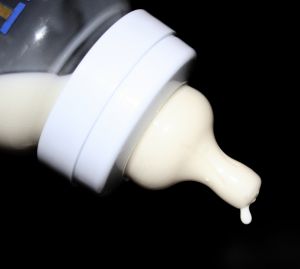 The first painful hurdle I was to face as a mother was the need to return to work. After a three-month crash course in Attachment Parenting (AP), my daughter and I were well bonded, so going back to work broke my heart. I have to admit it still does — every day that I spend more time working for a paycheck than I do building a relationship with my daughter, I cry a little privately.
The first painful hurdle I was to face as a mother was the need to return to work. After a three-month crash course in Attachment Parenting (AP), my daughter and I were well bonded, so going back to work broke my heart. I have to admit it still does — every day that I spend more time working for a paycheck than I do building a relationship with my daughter, I cry a little privately. For survivors of childhood sexual abuse or sexual assault, breastfeeding can pose challenges. Unfortunately, sexual abuse and assault are relatively common experiences, affecting 20% to 25% of women. The reactions of abuse survivors to breastfeeding run the whole range of responses – from really disliking it to finding it tremendously healing.
For survivors of childhood sexual abuse or sexual assault, breastfeeding can pose challenges. Unfortunately, sexual abuse and assault are relatively common experiences, affecting 20% to 25% of women. The reactions of abuse survivors to breastfeeding run the whole range of responses – from really disliking it to finding it tremendously healing.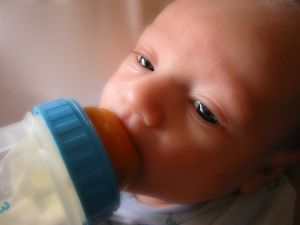 When I was pregnant for the first time, I wasn’t sure what I would do and I was actually a little afraid of committing to breastfeeding and being my child’s sole source of sustenance.
When I was pregnant for the first time, I wasn’t sure what I would do and I was actually a little afraid of committing to breastfeeding and being my child’s sole source of sustenance.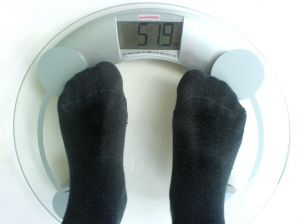 As attachment parents, we need to be sure that we love and accept our children no matter what – and this includes their weight. Some children are naturally, genetically, more overweight or underweight than other children, and this is OK. The reason for the national media attention on children and their weight management is because of the high rates of obesity not only among adults but among children, as well.
As attachment parents, we need to be sure that we love and accept our children no matter what – and this includes their weight. Some children are naturally, genetically, more overweight or underweight than other children, and this is OK. The reason for the national media attention on children and their weight management is because of the high rates of obesity not only among adults but among children, as well. Many women find themselves pregnant while they are still enjoying a nursing relationship with their child. It doesn’t typically occur during the first six months, as long as you and your child are together most of the time and the child is exclusively nursing, but it can happen any time. Your child may be seven months or two years old when you discover you are pregnant. Should pregnancy be the reason to wean? For most mothers, the answer is a resounding no!
Many women find themselves pregnant while they are still enjoying a nursing relationship with their child. It doesn’t typically occur during the first six months, as long as you and your child are together most of the time and the child is exclusively nursing, but it can happen any time. Your child may be seven months or two years old when you discover you are pregnant. Should pregnancy be the reason to wean? For most mothers, the answer is a resounding no! Did you ever think you would be considering nursing two children at the same time? Probably most of us haven’t thought about that, but many women have done it. Known as tandem nursing, it happens all the time with twins and triplets but can be done also be done with children of different ages – for example, nursing your newborn while continuing to nurse your toddler.
Did you ever think you would be considering nursing two children at the same time? Probably most of us haven’t thought about that, but many women have done it. Known as tandem nursing, it happens all the time with twins and triplets but can be done also be done with children of different ages – for example, nursing your newborn while continuing to nurse your toddler.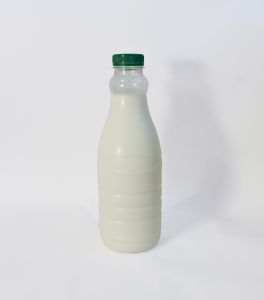 My experience with weaning my daughter was very successful and non-traumatic, which was a good thing since I found it hard to imagine how I would ever refuse her.
My experience with weaning my daughter was very successful and non-traumatic, which was a good thing since I found it hard to imagine how I would ever refuse her. Babies are born with the skills and instincts to help them breastfeed, but we often ignore the messages and cues they are sending us. It is much easier for your baby to latch if your baby is calm yet ready to nurse. The entire process becomes far more difficult when the baby is upset, exhausted from crying, overly hungry, or not hungry at all, so it is valuable to tune into your baby’s cues and internal rhythms so that breastfeeding happens when the baby is ready.
Babies are born with the skills and instincts to help them breastfeed, but we often ignore the messages and cues they are sending us. It is much easier for your baby to latch if your baby is calm yet ready to nurse. The entire process becomes far more difficult when the baby is upset, exhausted from crying, overly hungry, or not hungry at all, so it is valuable to tune into your baby’s cues and internal rhythms so that breastfeeding happens when the baby is ready.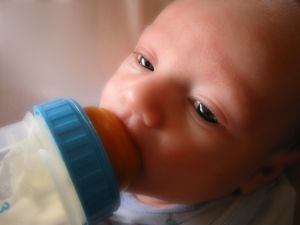 We have been contacted by many parents and caregivers who want to incorporate the most loving behaviors into their feeding practices with their babies. Our culture often supports practices that create disconnection from our children. For instance, some parents have shared with us that they were given baby gear to encourage a “hands off “ style of parenting, including devices to prop a baby bottle so the baby does not have to be held during feedings. An
We have been contacted by many parents and caregivers who want to incorporate the most loving behaviors into their feeding practices with their babies. Our culture often supports practices that create disconnection from our children. For instance, some parents have shared with us that they were given baby gear to encourage a “hands off “ style of parenting, including devices to prop a baby bottle so the baby does not have to be held during feedings. An